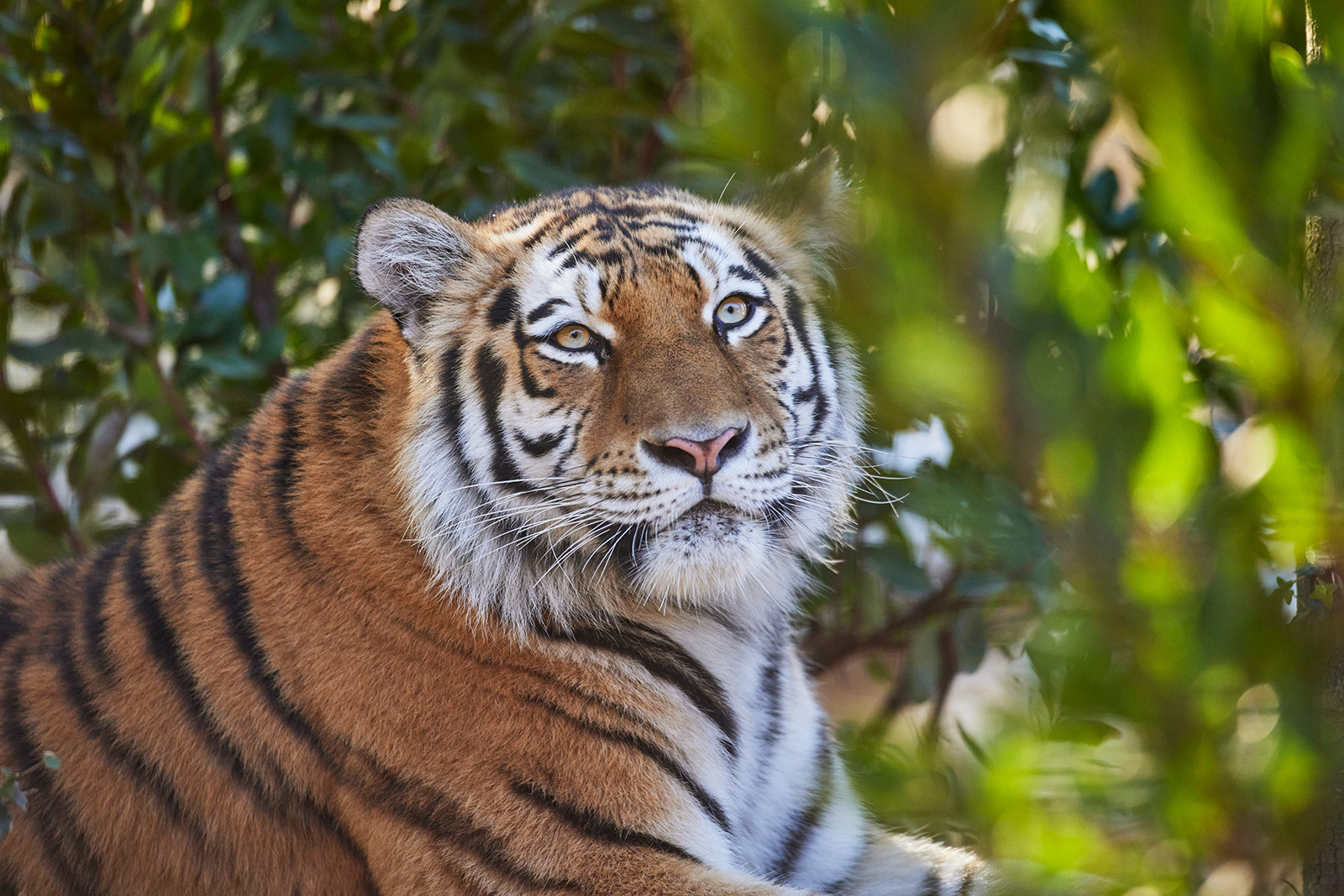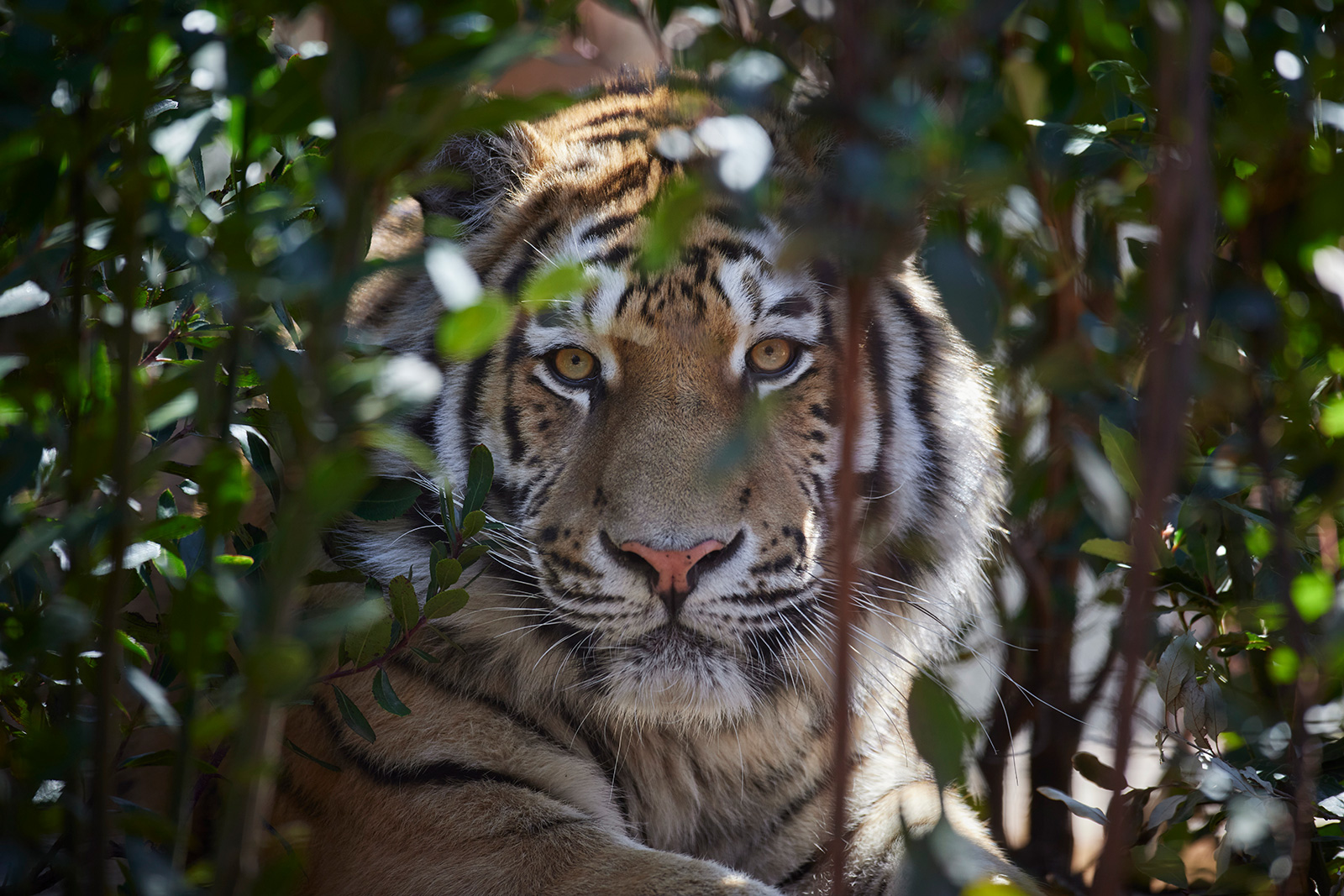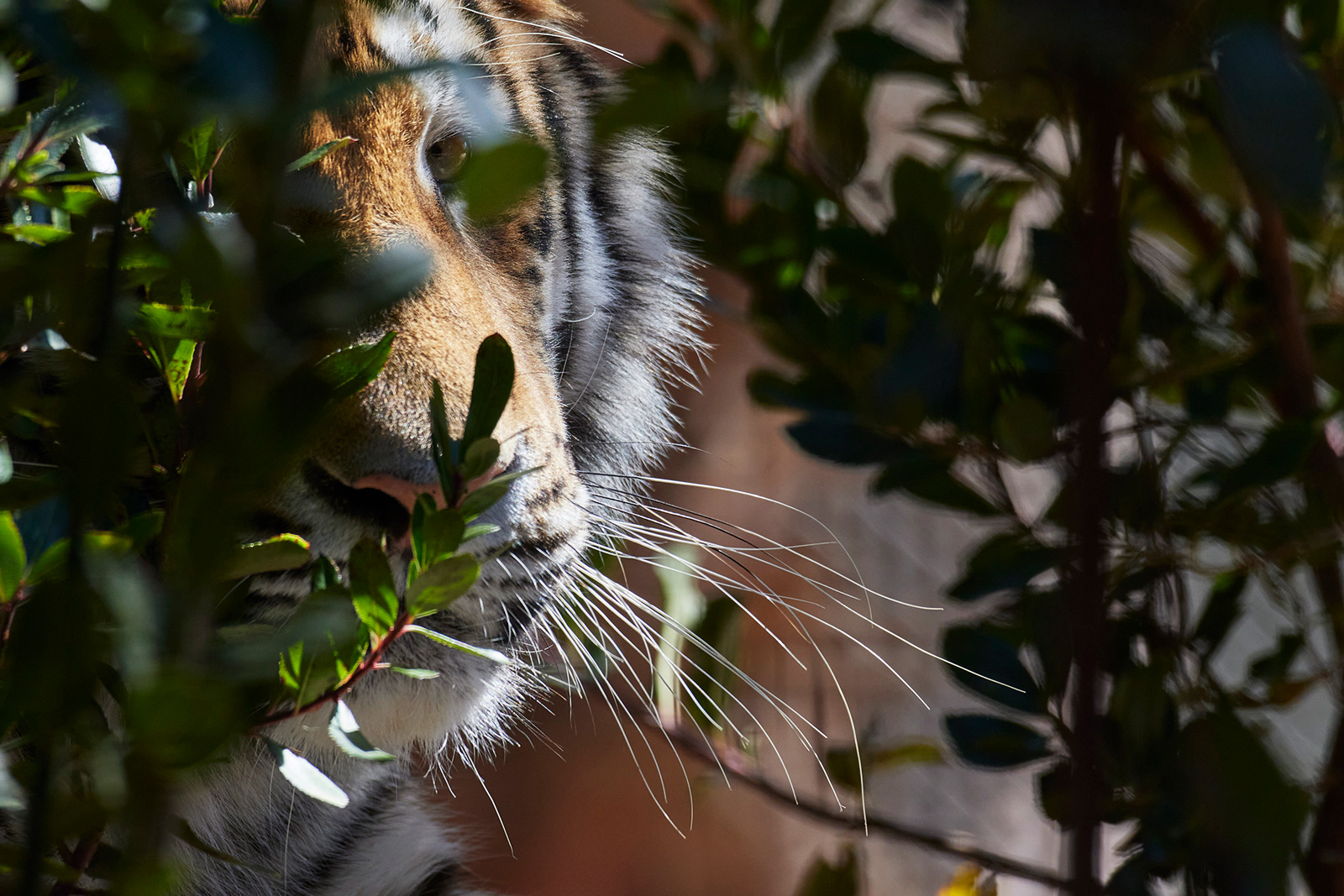New Tiger Space

The tigers are back at the zoo!
It took us two years to develop this new Tiger Space which was designed to provide the most majestic of big cats with a spacious habitat adapted to its needs.
The exhibit houses a pair of Amur Tigers (Panthera tigris altaica) who was transferred to La Palmyre from the zoos of Banham in England and Hamburg in Germany, following the recommendation of the EAZA Ex Situ Program for this subspecies native to the Russian Far East and northeastern China. It is estimated that only 350 to 450 Amur tigers survive in the wild.

Made of a planted outdoor enclosure and a 240 m³ pool, the new Tiger Space is located after the giraffe observatory, just beyond the future new exhibits for African penguins and Asian Small-clawed otters.
Viewpoints located at different levels offer panoramic views on the tiger enclosure, among which one from the wooden platform adjacent to the aviary for the Northern Bald Ibises and Rock Hyraxes, two species that recently arrived in the park.

As an apex predator, the Amur tiger is the largest of the six subspecies currently identified. Built for hunting, it can kill large ungulates such as deer, roe deer and wild boars.

As long as they have enough prey, tigers are able to adapt to extremely diverse habitats: equatorial rainforests and mangroves in India and Sumatra, semi-arid areas in western India, deciduous and coniferous forests of the Himalayas up to 4,500 meters above sea level as well as temperate forests of northeastern Russia and China.
Tigers are solitary and territorial animals, maintaining exclusive home ranges. Those of adult females barely overlap, while those of males typically include those of one to three females. Young tigers become independent around 18 to 20 months old but continue to hunt on their mother's territory for several months, until she gives birth to new cubs. They must then seek for new territories.
Primarily threatened by poaching for their skins and various body parts used in traditional Asian medicine, or hunting of their prey, tigers must also cope with habitat loss and fragmentation. In regions where human encroachment increases, conflicts linked to attacks on livestock or even human communities can occur, leading to retaliation against the predator. Tigers, who now occupies only 8% of their original distribution area and whose global population is currently estimated at less than 4,500 individuals, are classified as Endangered on the IUCN Red List.


